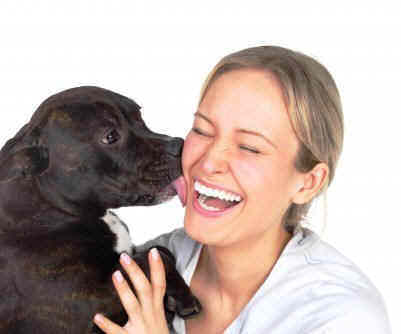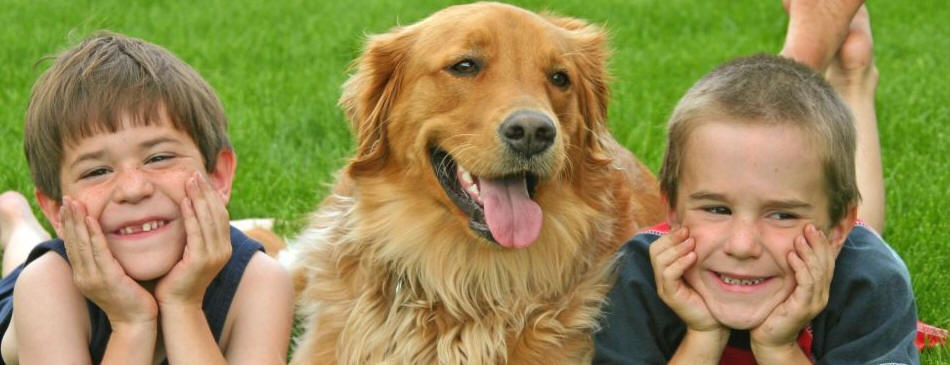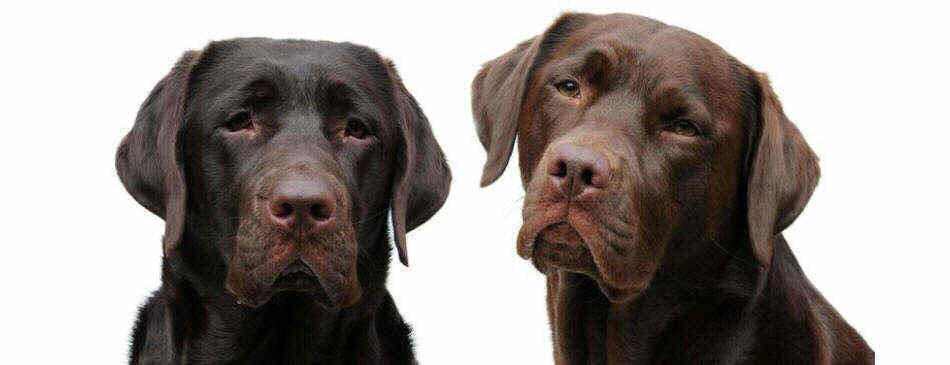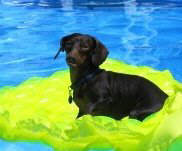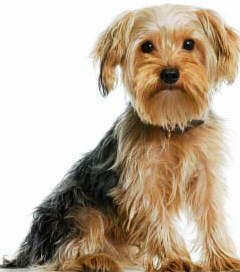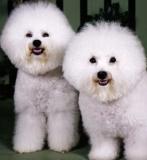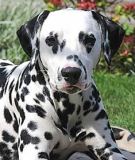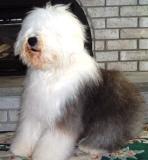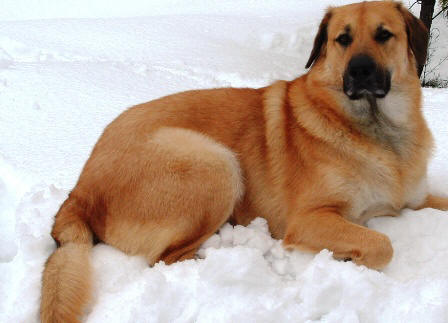|
The Chinook Breed was developed by Polar Explorer Arthur Treadwell
Walden during the early 1900’s on his farm in Wanalancet New
Hampshire. Walden’s farm was located along the same quiet country
road, “The Chinook Trail”, where Milton and Eva Seeley helped
develop the AKC Siberian and Malamute breeds. By blending a
Mastiff
type dog with Greenland Husky, German and Belgian Shepherds, Walden
succeeded in creating an American breed of sled dog with power,
endurance and trainability, with a friendly, gentle nature, and with
a distinctive tawny color. In 1927 Arthur Walden, along with 16 of
his male Chinooks, went with Admiral Richard Byrd’s first expedition
to Antarctica. The Chinook dogs were used to haul the expedition
freighting sleds. In 1965, the Guinness Book of World Records
recorded the Chinook as the rarest dog in the world. With the love
and dedication of Chinook fanciers, these American-bred tawny sled
dogs have been saved from extinction, and there are now more than
600 Chinooks listed with the AKC’s Foundation Stock Service. The
Chinook is one of a few dog breeds created in America.
General Appearance
The Chinook has a compact muscular frame that well suites this
gentle sled dog. The body is well balanced; the chest is deep;
moderate bone and flexible musculature are prominent. The skin on
the head is tight with no wrinkles. The stop is moderate and there
is a furrow running vertically from the stop to the occiput. The
muzzle is powerful, and the teeth are enduring. The breed's ear
carriage, rather wind-blown and bending, gives the dogs a curious
and entreating glint, However, the ears can also be pricked up. The
nose has large wide nostrils, should be solid black, and projects
slightly over the mouth. The lips are black in color. The top lip
overhangs the lower lip very slightly and the corners of the lower
lip are slightly pendulous. The teeth meet in a scissors bite. The
eyes are almond-shaped and of moderate size, with an intelligent
expression. Dark brown eyes are preferred; but lighter, amber eyes
are acceptable. Eye rims are dark-pigmented. The feet are oval,
firm, and compact, with well-knit, well-arched toes and tough,
deeply cushioned, darkly-pigmented pads. The toes are moderately
webbed and the feet are well-furred, even between the toes. The
front feet turn slightly outward. Dewclaws can be removed from the
front feet and, if present, are usually removed from the back feet.
The tail is thick at the root and tapers to the tip. When the dog is
standing, the tail hangs downward, approximately to the hocks. When
the dog is moving, the tail is carried up. The Chinook tail is never
docked. Chinooks have a double coat of medium length hair.
Temperament
Chinooks are affectionate family dogs, dependent on their owner,
with a special bond to children. They are intelligent and easy to
train, with a gentle and affectionate disposition and a calm and
willing work ethic. The Chinook breed is loyal, intelligent, calm,
and friendly. They are excellent with children, dogs, and other
household pets. This breed is somewhat wary of unfamiliar
surroundings and people, but is never aggressive or shy. Chinook's
are reliable, versatile, dedicated, and patient. They make excellent
workers and family companions. The Chinook breed is not recommended
for watchdog purposes as they are not prone to bark. They are
sensitive and do not do well if left alone for extended periods of
time. Whether a Chinook is running in a team on a snowy trail,
earning show titles in the ring, running an agility course, hiking
on a desolate mountain trail, or snuggling on the couch with a
beloved family member, the Chinook is the ideal all purpose canine
companion.
Grooming
The Chinook requires minimal grooming as the coat practically takes
care of itself. Weekly brushing with a firm bristle brush will
minimize loose and dead hair.
Health Problems and Life Expectancy
The following health conditions have occurred within the overall
Chinook breed: excessive shyness, eye abnormalities,
hip dysplasia,
hormonal skin problems, mono/bilateral cryptorchidism, seizures and
spondylosis. Generally, the breed is very healthy and these diseases
occur in a small percentage of the population. The average life
expectancy for the Chinook is 10-15 years.
Activity Level
As a working breed, the Chinook thrives on regular exercise:
training and competing, along with activities such as backpacking,
hiking, jogging, agility, and skijoring will keep a Chinook happy,
fit, and healthy. The Chinook is not recommended for apartment
living. They do best with a securely fenced yard. Chinook's do not
require an inordinate amount of exercise and are not considered an
outdoor pet.
|
